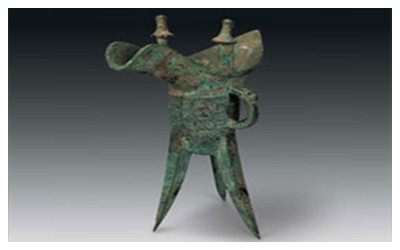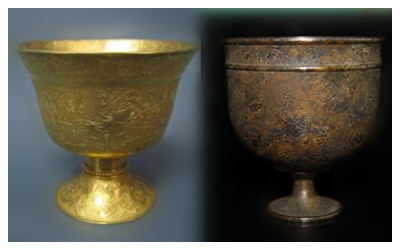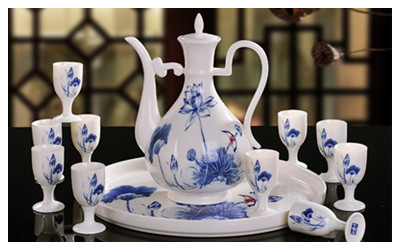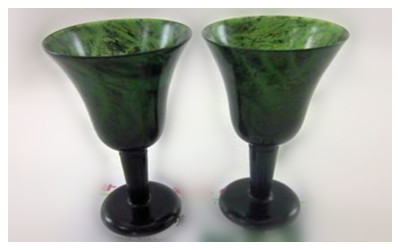Skype: neodalle-travel
Tel: +86 135 7447 2266
E-mail: sales@visitaroundchina.com

 According to historical records and archeological evidence, there were dozens of types of vessels excluding the cups we use today. The earthen wares archeologists discovered in Shaanxi province in 1983 were authenticated to be the oldest drinking vessels revealed in China. During the Shang and Zhou dynasties, bronze vessels were popular in the north while porcelain vessels with carved figures were introduced in the south.
According to historical records and archeological evidence, there were dozens of types of vessels excluding the cups we use today. The earthen wares archeologists discovered in Shaanxi province in 1983 were authenticated to be the oldest drinking vessels revealed in China. During the Shang and Zhou dynasties, bronze vessels were popular in the north while porcelain vessels with carved figures were introduced in the south. Those were produced in the shapes of the tiger, elephant, rhinoceros, ox or sheep, etc. something that demonstrates the high standards of manufacturing skills that had been attained at the time.
Those were produced in the shapes of the tiger, elephant, rhinoceros, ox or sheep, etc. something that demonstrates the high standards of manufacturing skills that had been attained at the time.Golden & Silver Drinking Vessels
Later in the Qin and Han dynasties, glass and whelk vessels appeared, and gold and silver cups decorated the lavish banquets of the despots. Drinking vessels became more delicate and tasteful during the Northern and Southern dynasties since drinking was an intellectual activity during that time.
Pottery & porcelain Drinking Vessels
 Vessels developed further during the Spring and Autumn period and the Warring States period, from pottery to porcelain with thin coat of enamel. During the Sui and Tang Dynasty porcelain pots and cups were common.
Vessels developed further during the Spring and Autumn period and the Warring States period, from pottery to porcelain with thin coat of enamel. During the Sui and Tang Dynasty porcelain pots and cups were common.
The design of porcelain vessels produced during the Tang Dynasty (618 - 907) surpassed any that had gone before and they were much smaller and more delicate. This material continued to be used until the Ming and Qing Dynasty. The bowls and stoups with their blue and white flower patterns were quite an art.

Moonlight luminous cup is authorized to use the Chinese Geographic Trademark.The jade used to make the cup is also a local specialty that comes in three colors - ink, green and yellow. Jade of all the three colors can make sound raw material for luminous cups. Dark as night, green as emerald, and white as lanolin, luminous cups have distinctive natural patterns. Thanks to the high tolerance to heat and cold, these cups are ideal to serve hot and cold drinks.
In 2006, Jiuquan Luminous Cup Carving was listed among the first batch of National List of Intangible Cultural Heritage of China for protection. In the following year, the Ministry of Culture designated Huang Yuesu as a national representative successor of the national-level intangible cultural heritage project - "Luminous Cup Carving".
 Ask Questions ?
Ask Questions ?